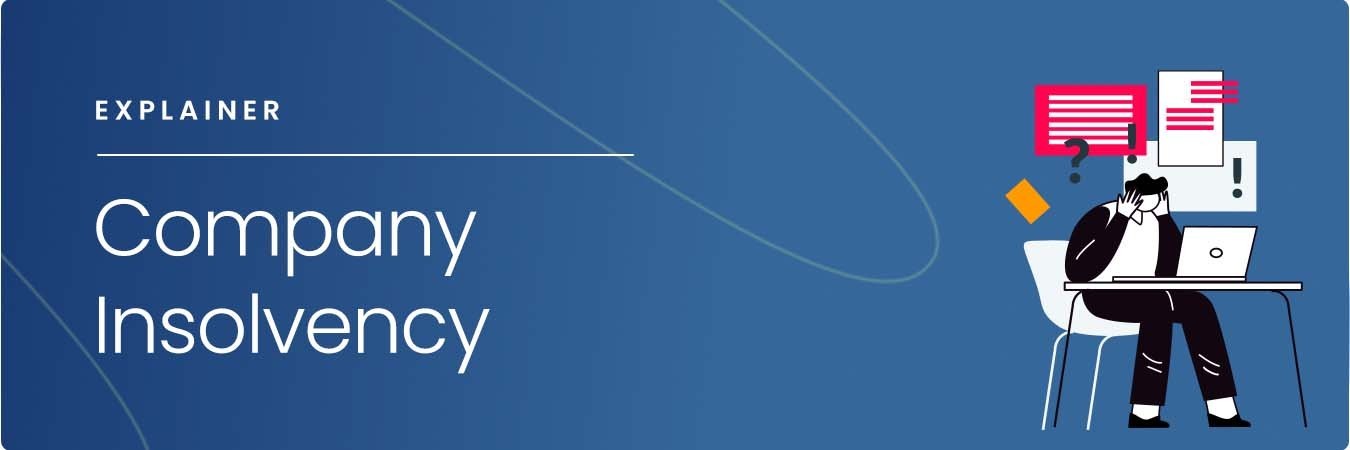Insolvency Practitioner Things To Know Before You Get This
Insolvency Practitioner Things To Know Before You Get This
Blog Article
The smart Trick of Insolvency Practitioner That Nobody is Discussing
Table of ContentsInsolvency Practitioner Fundamentals ExplainedNot known Incorrect Statements About Insolvency Practitioner Insolvency Practitioner - TruthsThe smart Trick of Insolvency Practitioner That Nobody is DiscussingInsolvency Practitioner Fundamentals ExplainedAll about Insolvency PractitionerFascination About Insolvency Practitioner
Insurance policy is checked and controlled by state insurance departments, and one of their primary purposes is shielding insurance holders from the risk of a firm in monetary distress. When a firm gets in a period of economic problem and is not able to meet its obligations, the insurance policy commissioner in the firm's home state launches a processdictated by the regulations of the statewhereby efforts are made to help the business restore its economic footing.If it is established that the company can not be fixed up, the company is proclaimed financially troubled, and the commissioner will certainly ask the state court to purchase the liquidation of the firm. The insurance policy commissioner, either designated by the guv or chosen, heads the state insurance division and displays and regulates insurance policy task within the state.

[Back] By obtaining control of a firm, the commissioner (or the insurance division) is, by law, the rehabilitator or liquidator of the company. In this capability, the commissioner or department takes control of the firm's procedures. Instead of do so directly, the commissioner might retain an unique deputy receiver to supervise the company's tasks.
Everything about Insolvency Practitioner
The receiver oversees an audit of the business's properties and liabilities and provides the estate of the firm. In doing so, the receiver looks for to make the most of the business's assets, move them to cash, and afterwards disperse that cash to financial institutions having legitimate cases against the insurance provider in conformity with payment priorities specified by state regulation (in all states, insurance policy holders are top priority plaintiffs whose insurance claims are paid before those of basic financial institutions).
All insurance provider (with restricted exemptions) certified to market life or wellness insurance policy or annuities in a state need to be members of that state's guaranty association. The guaranty association accepts the commissioner and the receiver in pre-liquidation preparation. When the liquidation is gotten, the guaranty organization offers coverage to the business's policyholders that are state homeowners (up to the degrees specified by state lawssee below; any type of benefit amounts above the warranty asociation benefit levels end up being cases versus the firm's continuing to be properties).
The above protection levels use independently for each bankrupt insurance company. When an insurer fails and there is a shortage of funds required to fulfill the responsibilities to insurance holders, state warranty organizations are turned on. Warranty associations have subrogation legal rights to an in proportion share of the possessions continuing to be in the fallen short insurance firm.
How Insolvency Practitioner can Save You Time, Stress, and Money.
Second, insurance companies doing business in that state are analyzed a share of the amount needed to satisfy the part of the warranty associations' covered cases not otherwise funded with estate possessions. The quantity insurance providers are examined is based upon the amount of premiums that they accumulate because state. [Back] The National Organization of Life and Medical Insurance Guaranty Organizations (NOLHGA) is composed of the visit homepage life and health insurance policy guaranty associations of all 50 states and the District of Columbia.
NOLHGA establishes a job pressure of representative guaranty associations to deal with the insurance coverage commissioner to develop a plan to shield insurance holders. To learn more on NOLHGA's role while doing so, see "What Is NOLHGA?" and "The Safety Net at Work." [Back]
You visit homepage are here: Insolvency is when a company or person can't pay debts when they schedule. There are numerous options available to a financially troubled firm or person: ASIC regulates companies, it does not handle individual bankruptcy treatments. To learn more regarding bankruptcy and individual insolvency arrangements, go to the Australian Financial Safety Authority web site.
Some Known Facts About Insolvency Practitioner.
Predictive defense by assisting you pick the best consumers and the ideal markets to prevent bad financial debt in the very first area, thanks to intense financial analysis (Insolvency Practitioner). In-depth market intelligence, giving you with 360-degree visibility on organization industries and putting at risk problems. It would be a simplification to believe a profession credit scores insurance begins and finishes with premiums and pay-outs
This can occur for a number of factors, including poor financial management, unforeseen expenses, or an adjustment in the market. If a firm is financially troubled, it may be required to shut down or liquidate assets to pay lenders. This can have a major influence on business, workers, and shareholders.
The Best Strategy To Use For Insolvency Practitioner
It can lead to job losses, possession sales, and directory even insolvency. It is necessary to recognize just how company bankruptcy works and how it can impact your company. Why does a firm participate in insolvency? There are a number of factors why a company may become part of bankruptcy. The most typical reason is that the company is incapable to pay its debts as they drop due.

Not known Details About Insolvency Practitioner
This can have significant implications for the firm, its stakeholders, creditors and the economic situation. The company may be forced to market assets, lay off team or even shut down. This can have a knock-on impact on the neighborhood neighborhood and the economic situation as a whole. Financial institutions might be neglected of pocket and the company's shareholders might see their financial investment vanish.
This can happen for a variety of reasons, consisting of bad financial management, unanticipated costs, or an adjustment in the marketplace. If a business is insolvent, it might be required to shut down or sell off properties to pay financial institutions. This can have a major effect on the service, employees, and shareholders.
Insolvency Practitioner - The Facts
Why does a firm get in right into insolvency? There are a number of reasons why a business may get in right into bankruptcy.
Other reasons for insolvency include scams, mismanagement, and unforeseen prices. Bankruptcy can also lead to job losses and the closure of companies.
The firm might be compelled to sell possessions, lay off personnel or also shut down. Financial institutions might be left out of pocket and the company's shareholders may see their investment go away.
Report this page